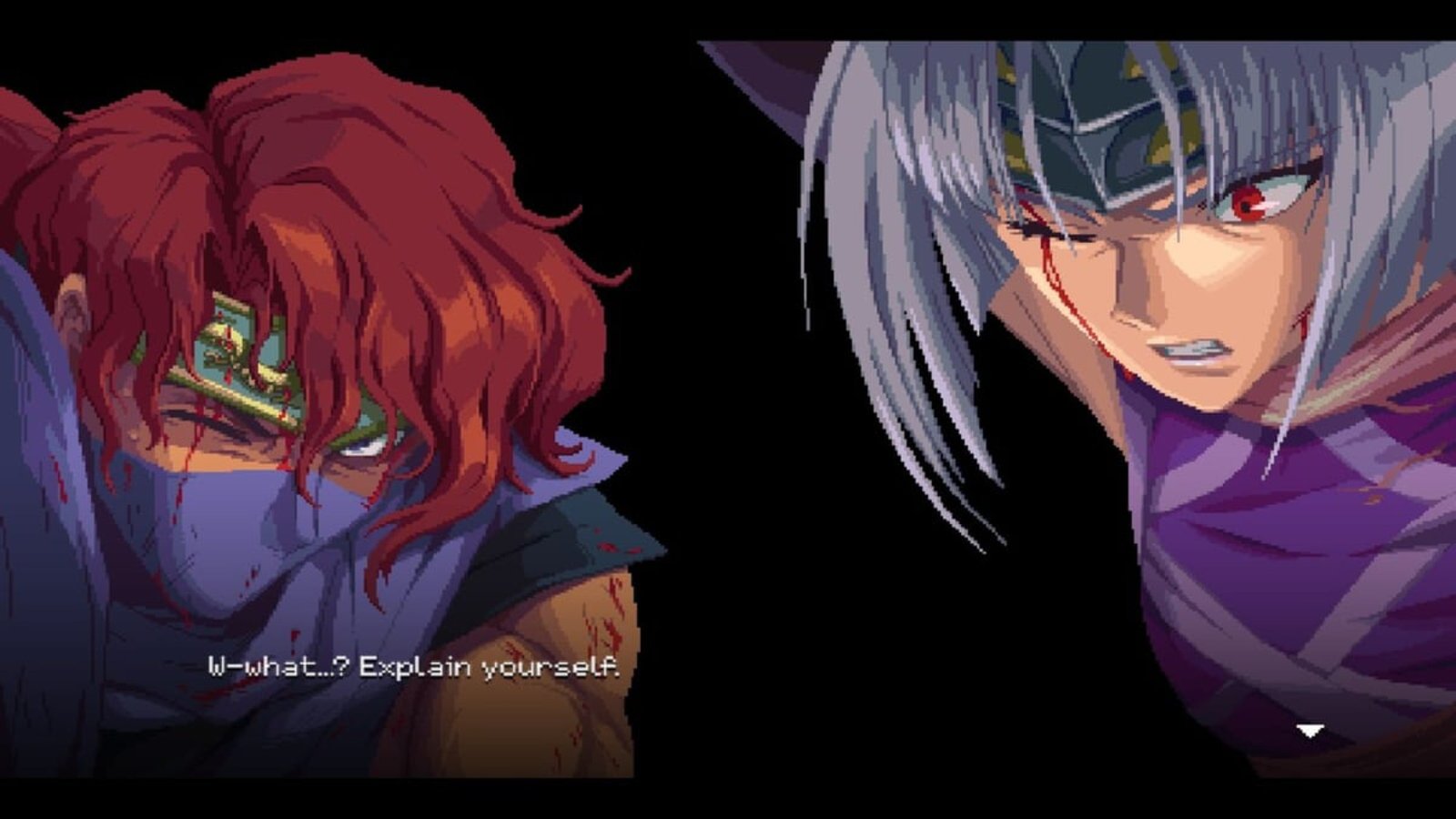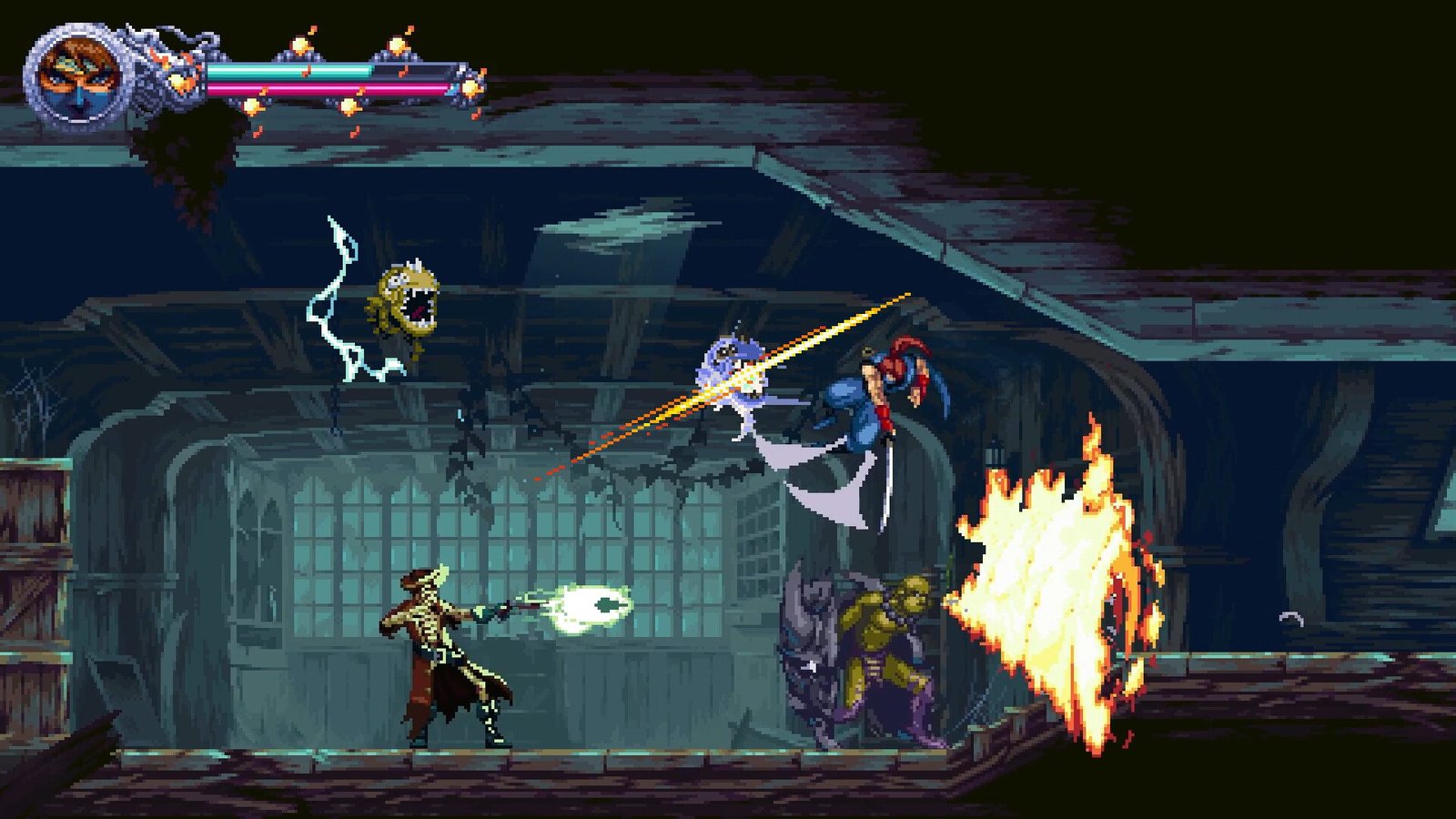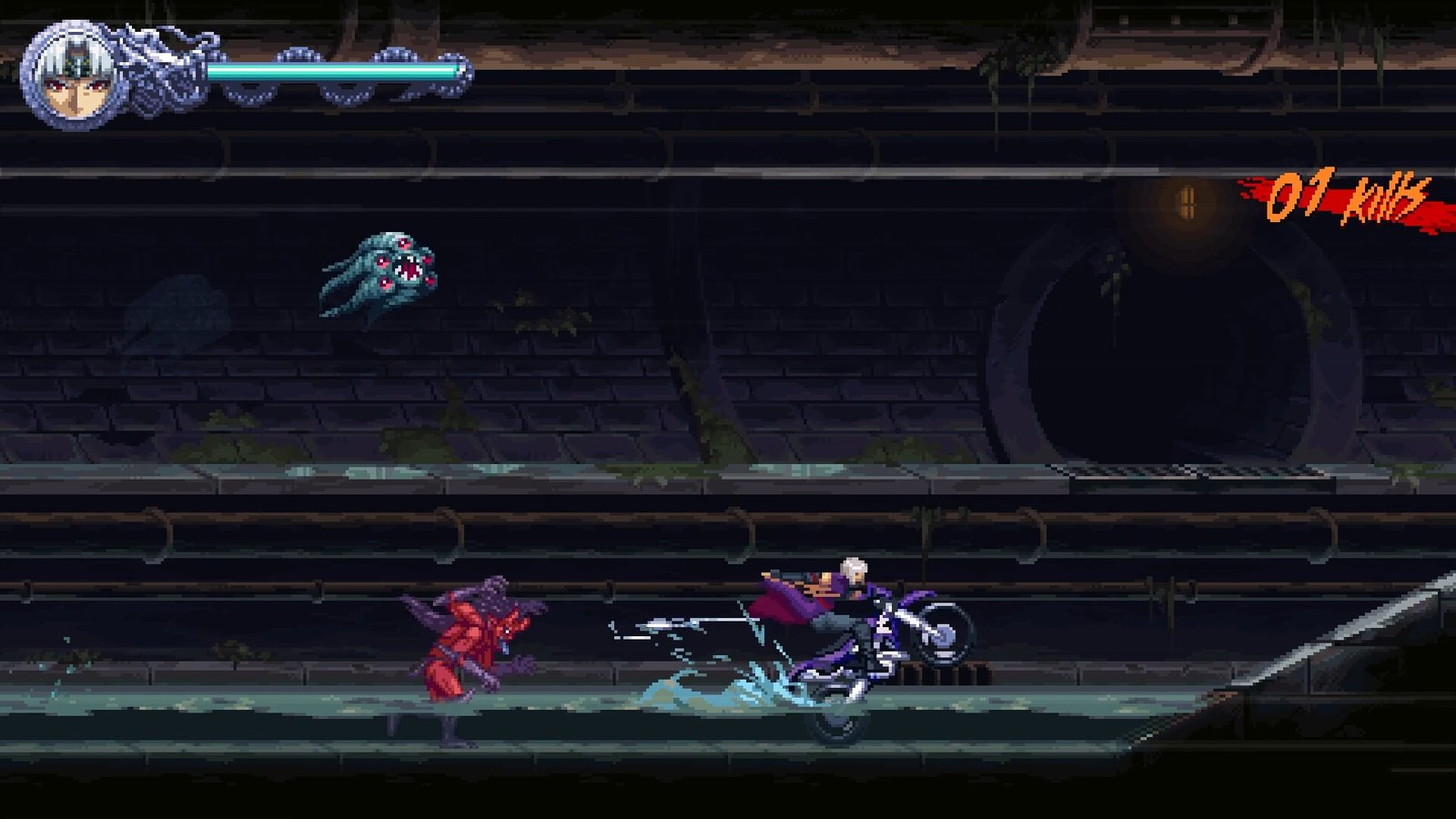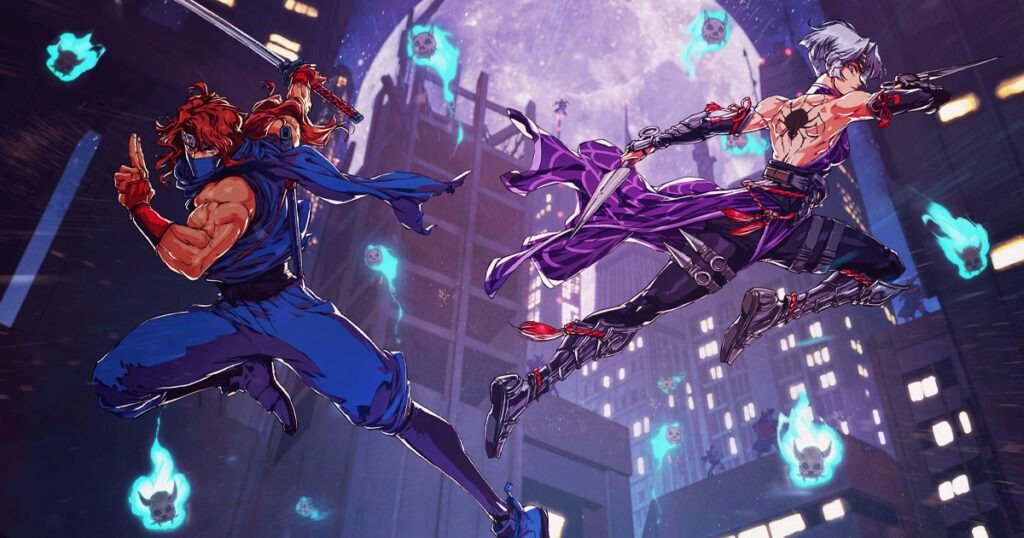Ninja Gaiden: Ragebound on PC
It seems like old-school 2D revivals are all the rage these days. Franchises that appeared to have left their roots behind in the seventh console generation are coming back in droves, revisiting the kinds of experiences that made them so popular to begin with. The latest in this trend, Dotemu and The Game Kitchen’s Ninja Gaiden: Ragebound, is a prime example of how modernising retro design elements can bring new life to a beloved classic formula.
Running parallel to the events of the 1988 original, Ninja Gaiden: Ragebound follows new protagonist Kenji Mozu, who must defend Hayabusa Village from a demonic threat while Ryu Hayabusa is in America. As he uncovers the nefarious plot of the demons and other shady organisations, he’s thrust into a situation where an unlikely alliance is formed with Kumori, a member of the Black Spider Clan. With their fates inevitably entangled, Kenji and Kumori must work together to thwart the plans of the demons and those who seek to unleash their wrath on the world.
It’s a short and sweet setup that’s easy to grasp, but engages you deeply in its character dynamics and core storybeats. Pairing Kenji up with Kumori is a narrative stroke of genius in Ragebound. It incites witty banter and jabs at differences in moral compass, fuelled by the centuries of conflict between their respective clans. This is a dynamic we’ve not seen in Ninja Gaiden before, one that’s effortlessly expanded upon as it builds up to an immensely satisfying conclusion. It’s a story that’s far from complex, but the strength that lies in its simplicity makes it arguably the best narrative in the franchise.

Slicing With Complexity in Ninja Gaiden: Ragebound
The lean and straightforward nature of the story also carries over to Ninja Gaiden: Ragebound’s gameplay. This is a pure action 2D side-scroller built around a few easy-to-grasp mechanics that are pushed to their absolute limits by the time credits roll. Kenji is quite the acrobatic ninja; he can jump, wall climb, and dispatch enemies with ease. Most adversaries in Ragebound die in one hit, so most of the challenge comes from strategic pathing and planning your attack. It sounds simple on the surface, but it’s made much more complex through a few key mechanics.
The first of which is Hypercharge. Hypercharge is a superpowered attack that will one-hit any enemy, sans bosses. This means that even the tankiest units can be executed swiftly, which keeps your combo count rolling as you slice and dice through levels. Hypercharge is gained through killing enemies with a specific aura or by manually charging it through holding the attack button, which also costs health.
The game often encourages you to consider how you use Hypercharge to chain it successfully. You might gain Hypercharge off a regular goon, but using it to dispatch a large enemy immediately can leave you in a tricky spot. Analysing your situation to string together a lethal sequence of Hypercharge attacks is key to success and is immensely satisfying.

The second mechanic that keeps things feeling fresh is the Guillotine Boost, which allows Kenji to bounce off of enemies, projectiles, and other environmental hazards when appropriately timed. It doubles as an offensive and defensive manoeuvre, letting you get to out-of-reach platforms, avoid damage, and take care of flying enemies. Once you get the hang of it, it feels like a fluid and natural part of Kenji’s kit that creates room for a high level of skill expression.
Bouncing Your Way to S+ Rankings
When you couple all of this with Kumori’s throwable daggers, secondary weapons, screen-clearing Ragebound Arts, and unlockable Talismans, it becomes clear that Ninja Gaiden: Ragebound’s core gameplay loop goes as deep as you want it to.
A fundamental understanding of all these systems is necessary to get through the three to four-hour main story, but chasing those S+ rankings requires a complete mastery. You also need an intimate understanding of the levels, their hidden secrets, and how they throw certain enemies at you.
I say this because Ninja Gaiden: Ragebound is quite challenging, especially in its boss fights. They implore you to spend time learning their tells and how to best deal with attacks while exploiting openings. My only real gripe with them is that a couple of them do get reused, so they’re typically less challenging on their second go around, even with some new moves. Those looking for more punishment will be pleased to hear that Ragebound offers a hard mode to jump into once credits roll, offering an even higher level of challenge with a new set of S+ rankings to chase after.

If you’ve seen a trailer or screenshot for Ninja Gaiden: Ragebound, it’ll come as no surprise to you that this game is a visual treat. The Game Kitchen has proven they’re masters of detailed pixel art in their efforts with Blasphemous and Blasphemous 2. Ragebound is no different, sporting an immensely detailed and gorgeously animated smorgasbord of sprites and environments to take in. It’s so simple, yet so charming in how it honours and replicates the styles of the original Ninja Gaiden games, while also forging its own visual identity. The original soundtrack is also fantastic, with so many rocking tracks that score the on-screen carnage impeccably.
Between the Ninja Gaiden: Master Collection, Ninja Gaiden 2 Black, the upcoming Ninja Gaiden 4, and now Ninja Gaiden: Ragebound, Ninja Gaiden fans have been eating good recently. This is a true labour of love from The Game Kitchen, one that timelessly revitalises classic Ninja Gaiden. If Ragebound is an indication of where the series is going in the future, things are looking sharp as a kunai for the seminal action franchise.
Ninja Gaiden: Ragebound is out now on PlayStation 5, PlayStation 4, PC, Xbox Series X|S, Xbox One, and Nintendo Switch.
SavePoint Score
Summary
Ninja Gaiden: Ragebound is a furious and unrelenting reimagining of 2D Ninja Gaiden, proving that The Game Kitchen is among the best in the business.

